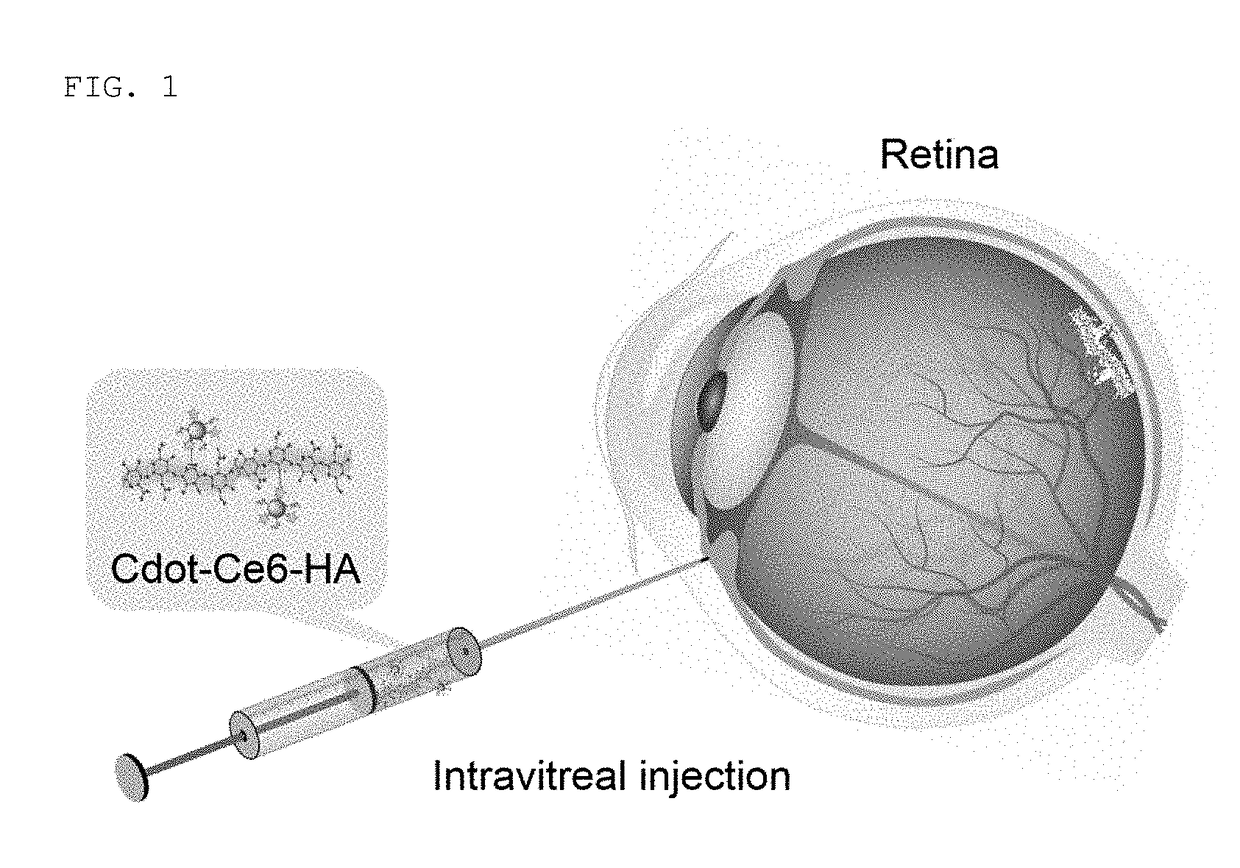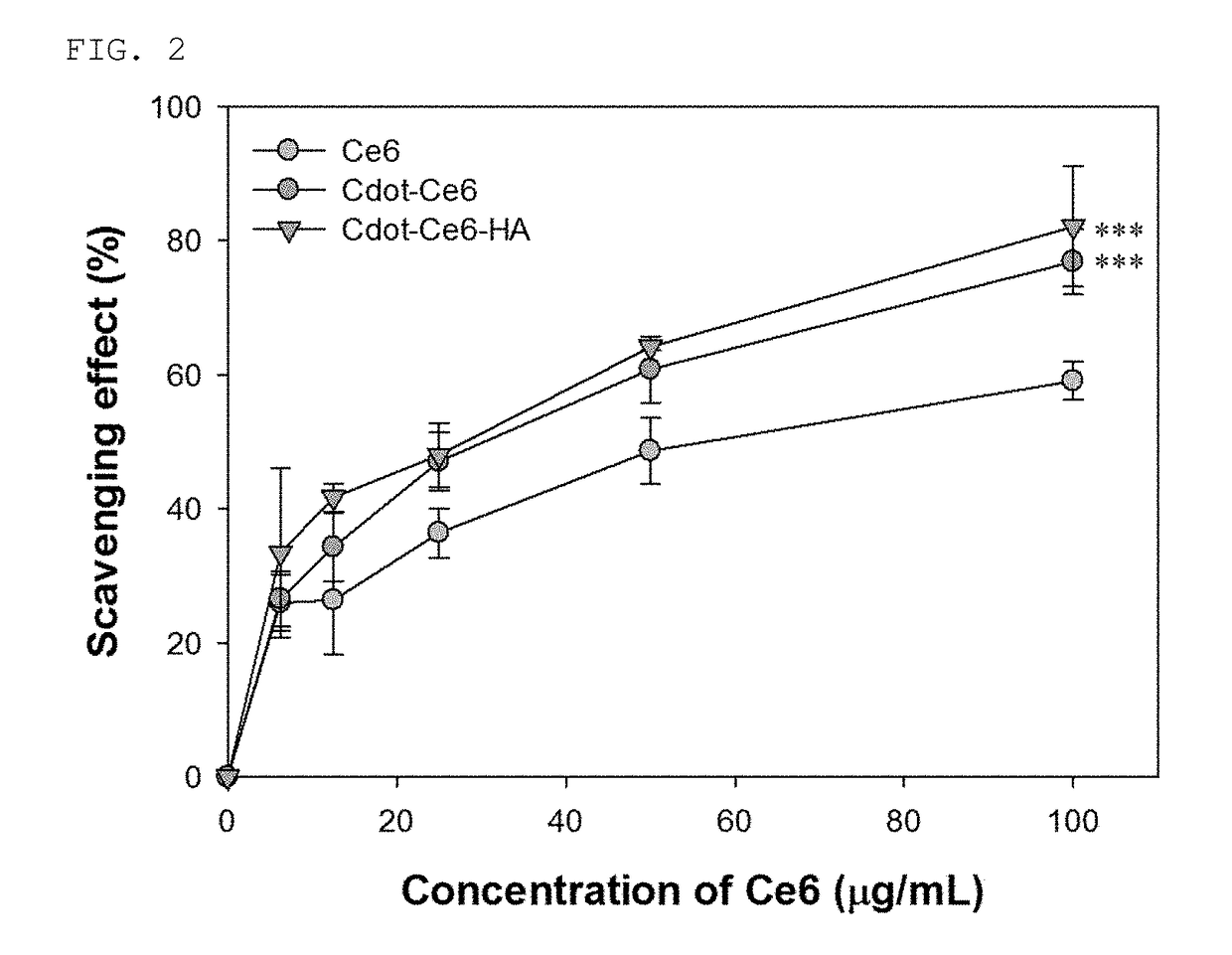Treatment of retinitis pigmentosa using hyaluronic acid-carbon nanomaterial-photosensitizer complex
a technology of hyaluronic acid and nanomaterials, applied in the field of complexes for treating or remedying retinal diseases, can solve the problems of low therapeutic efficacy and inconvenience of patients staying in dark rooms, and achieve the effects of preventing the formation of active oxygen, excellent therapeutic efficacy, and easy infiltration into cells
- Summary
- Abstract
- Description
- Claims
- Application Information
AI Technical Summary
Benefits of technology
Problems solved by technology
Method used
Image
Examples
preparation example 1
onic Acid Substituted with Diaminohexane
[0071]A molar amount of diaminohexane equal to 20 times the molar amount of a hyaluronic acid monomer or the larger molar amount of diaminohexane was added to 5 mg / 1 mL of an aqueous solution including 210 kDa of a hyaluronic acid. The pH was reduced to 5.5, a reaction was performed for 10 min using EDC and sulfo-NHS (sulfo-N-hydroxysuccinimide), the pH was increased to 7.4 to terminate the reaction, and the resultant material was purified using dialysis and freeze-dried, thereby obtaining the hyaluronic acid substituted with diaminohexane.
preparation example 2
Quantum Dot-Ce6 Complex
[0072]NHS and EDC were added in the same molar number to a solution of 1 mg of Ce6 / 1 mL DMSO to activate a carboxylic group for 30 min, mixed with a solution of 2 mg of a carbon quantum dot / 1 mL of a phosphate buffer to perform a reaction in a dark room for 12 hours, purified, and freeze-dried, thereby obtaining the carbon quantum dot-Ce6 complex.
example 1
re of Hyaluronic Acid-Carbon Quantum Dot-Ce6 Complex
[0073]The hyaluronic acid, substituted with diaminohexane, manufactured in Preparation Example 1 and the carbon quantum dot-Ce6 complex manufactured in Preparation Example 2 were mixed at a ratio of 5:2, and were reacted in a dark room using EDC for 18 hours to thus manufacture a hyaluronic acid-carbon quantum dot-Ce6 complex. Subsequently, the complex was purified in a phosphate buffer for one day and in distilled water for one day in order to remove EDC, which was a catalyst.
PUM
| Property | Measurement | Unit |
|---|---|---|
| concentrations | aaaaa | aaaaa |
| concentrations | aaaaa | aaaaa |
| concentrations | aaaaa | aaaaa |
Abstract
Description
Claims
Application Information
 Login to View More
Login to View More - R&D
- Intellectual Property
- Life Sciences
- Materials
- Tech Scout
- Unparalleled Data Quality
- Higher Quality Content
- 60% Fewer Hallucinations
Browse by: Latest US Patents, China's latest patents, Technical Efficacy Thesaurus, Application Domain, Technology Topic, Popular Technical Reports.
© 2025 PatSnap. All rights reserved.Legal|Privacy policy|Modern Slavery Act Transparency Statement|Sitemap|About US| Contact US: help@patsnap.com



